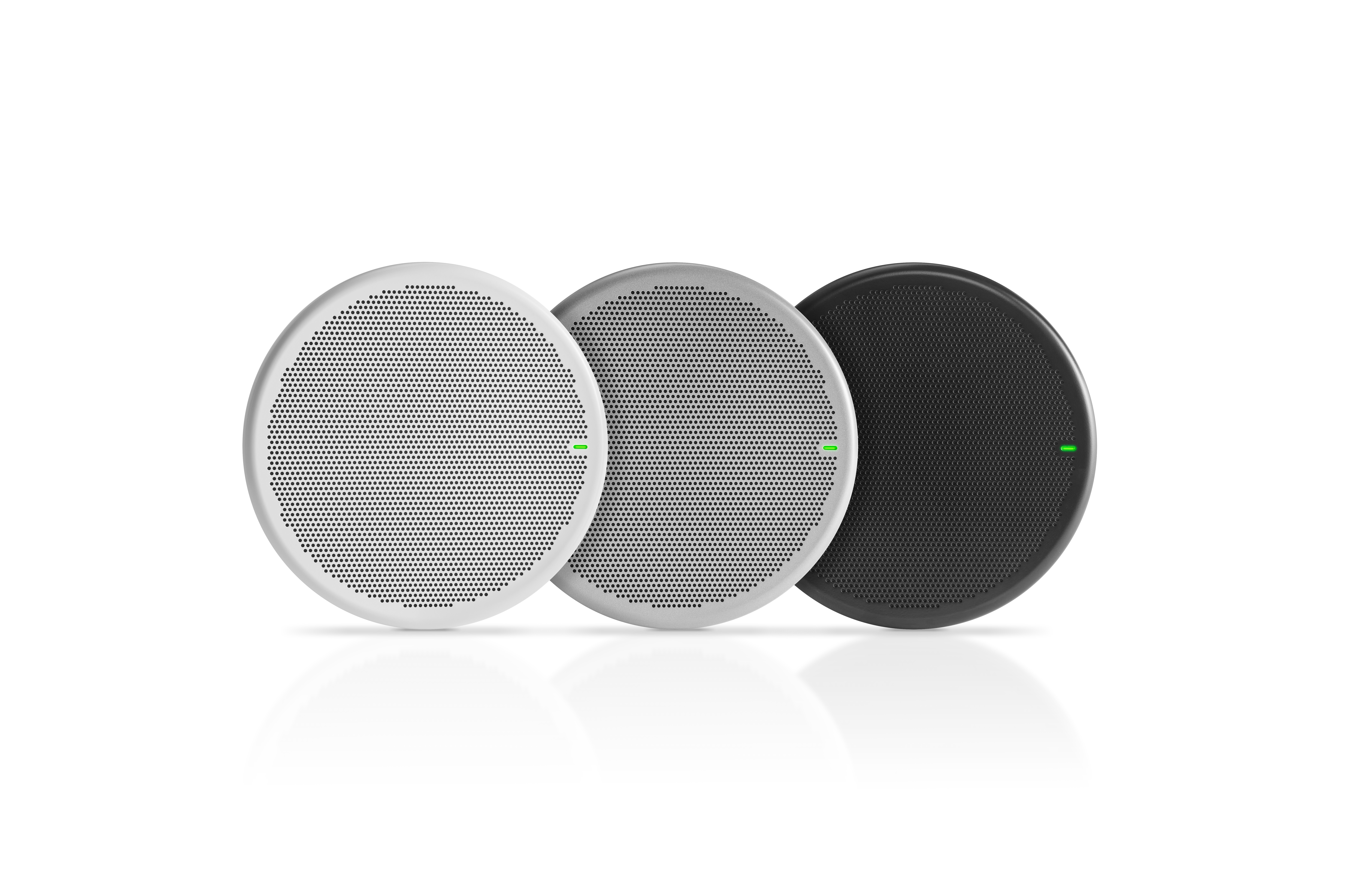
Communication is critical for any live event, broadcast or stream. Apart from cell phones and general-purpose two-way radios (aka walkie-talkies), intercom systems are the backbone of communication in theaters, music venues, stadiums, and live production facilities. Intercoms may also be installed in non-live situations when immediate and reliable communication is needed.
Production intercoms have a long history and many evolutionary steps, which makes the topic an entire area of specialization. Clearcom is credited with introducing the distributed beltpack concept in the late 1960s. This is still the model for wired “partyline” intercoms, so that’s a good place to start.
Analog Partyline
As the name suggests, partyline intercoms allow open conversation between all users on the same channel. PL systems may have more than one channel, say for the production team and the technical team, but the channels are separate (unless intentionally joined). This is an effective approach when many users are involved, but it’s not necessary to have many individual conversations.
Conventional analog wired PL systems typically connect user stations—beltpack, rack mount, or panel mounted—using shielded twisted-pair audio cable with XLR connectors. Some PL systems, such as RTS, can carry two individual channels on a single cable.
Whether one or two channels, wired PL connections typically also carry power for remote stations like beltpacks. Depending on the product, the DC voltage may be on its own XLR pin or combined with the audio (like microphone phantom power). In either case these “wet” intercom lines should not be plugged haphazardly into other audio gear!
PL systems usually include a master station which provides the DC power and other functions, such as Stage Announce and Hot Mic outputs. Alternatively, a standalone power supply can be used to power remote stations. Stations can be daisychained or fed from a splitter. Beltpacks draw very little current, and manufacturers provide specs for how many can be run from a given power source.
A key point about PL intercoms is that the audio connections are duplex. That is, audio in both directions is mixed together on a single conductor of the cable (or a balanced audio pair in some cases). Within the user stations the audio is separated into “talk” and “listen.” This must also be done to connect a PL system to other audio equipment. More on this below.
Lastly, analog PL usually requires a terminating resistance for each unique group of stations. Termination is often provided by switches on the back of master stations or built into power supplies. Lack of termination can cause problems such as loud squealing.
Analog Matrix
When the production environment is large and complex, with many different conversation needs, a matrix intercom may be required. The concept is similar to a matrix routing switcher for video or audio. Every station has its own connection to a central matrix, which allows point-to-point, or point-to-many, conversations.
In a broadcast facility it’s not unusual to have user stations (keypanels) for director, producer, technical director, audio operator, graphics, character generator, teleprompter, and others. While all of these could talk over a partyline, the matrix allows individual, private conversations as needed. The configuration of the system determines which stations can access each other via buttons or menus.
Matrix systems also provide sophisticated capabilities for adjusting audio levels, talk and listen control, signaling, labeling, and interfacing to other equipment. For this reason, the matrix will likely be configured using software, or a webGUI, that has extensive menus and functions.
In terms of electrical connections, analog matrix intercoms are known as “four-wire” devices because talk and listen audio are carried on separate balanced pairs, like typical pro audio equipment. From the standpoint of the central matrix, “talk” audio is a matrix input (from user stations), and “listen” is a matrix output (to user stations).
The manufacturer RTS uses the term “ports” for the connection point of a user station and uses RJ12 jacks with six functional contacts. A station that needs both talk and listen will connect to both the input and output of a port. But since each of those connections is actually a simple balanced audio pair, it’s fairly easy to connect other audio devices.
For example, the outgoing (listen) audio on a port might be sent to a stage announce or monitor speaker. That will tie up half the port, but the incoming (talk) connection could still be used for something else, perhaps an audio feed from a mixer. A “breakout” cable would be used, and the configuration software will determine how those signals are routed within the matrix.
A third balanced pair on the port is used to send control data between the matrix and user stations. This data configures the user stations and is what actively controls routing between stations. If a matrix port is not being used for a user station the control pair can be ignored (and possibly disabled in software).
Connecting matrix and partyline devices is where things get tricky. Since PL uses use a single pair of wires (either balanced or signal/ground) to carry the duplex audio, they are also known as “two-wire” (2W or TW) connections. (To be strictly accurate, partyline is shorthand for any shared intercom channel, while 2W/TW is a connection method used by wired partyline intercoms.) It is necessary to separate that duplex audio before connecting to a four-wire matrix port, which is done with an audio nulling device, also known as a hybrid. This is similar to the old “phone bridge” for connecting system audio to an analog telco line.
The exact operation of the hybrid varies among products (and history) but the crucial point is that a 4W-2W converter must be used between matrix and PL. The connectors may look compatible, but the signals are not! Modern 4W-2W converters use digital hybrids to produce excellent separation between talk and listen and provide “auto-nulling” functions to optimize the quality.
Analog matrix systems may be a small chassis or built with modular frames that allow huge installations (such as for the Olympics years ago) and additional special functions, like interface cards for direct PL connections or analog telephone lines. In complex situations a matrix intercom can be a real boon for creating all kinds of special user setups, and even routing nonintercom audio at times (see sidebar).
Digital Systems
Both partyline and matrix intercoms come in variations that use digital audio connections between devices, allowing longer distances and better sound quality. Operationally they are quite similar to analog, with the same caveats about DC power and interfacing.
The next logical step, of course, is to turn everything into data, which is becoming a prevalent approach for large systems. In this case system devices have IP addresses and may be directly connected or sit on a network. Intercom data can be sent over LAN, WAN and internet, with remote stations anywhere in the world. Setting up these scenarios can be tricky, and intercom manufacturers have their own methods of handling network transport and protocols for their products.
Once again, product lines may include modular or single-chassis models, some of which may include interfaces for both digital and “legacy” analog equipment, IP connectivity, and a range of user stations. The details of what different products can do, and how they should be connected, need careful attention when designing a system.
Note that while it seems like “everything is digital” in the tech world, analog intercoms should not be dismissed! For small installations with only local conversation, such as a single TV studio, a couple channels of analog PL will work perfectly well and can be built with a few off-the-shelf products. These also easily support basic IFB functions (see below).
Virtual Intercom
As with so many technologies, “virtualizing” intercoms into software was a logical step to
provide flexibility for diverse users. As with video conferencing, the value comes when there is a “central point” where multiple users join and audio is routed. Whether the central point is “in the cloud” (ie, as a service) or an on-prem server, users that connect via IP can be anywhere in the world and don’t necessarily need special hardware.
One such system, Unity Intercom, provides multiple partyline channels to users via a cell phone app, which connects to either their cloud service or a local computer running their server software. Once the software is configured, firewall rules established, and users have the correct IP address (usually a publicly routable static IP), they can join and leave conversations as needed.
The Unity server provides an assortment of options for administering channel groups and controlling talk and listen functions. Plus, with a local server, a USB or Thunderbolt audio interface can be used to connect with hardware intercoms or other audio equipment.
The beauty of a product like Unity is the ability to create ad hoc comms using devices that everyone has. A downside is that cell phones are not always ideal in live events, and there are no hardware user stations for busy places like control rooms.
Of course, the major comms manufacturers are also going virtual with various products, and those bring the features of a sophisticated matrix intercom, including physical endpoints, to the virtual environment.
Wireless Comms
As with microphones, less experienced users often think that everything is always wireless! That is certainly not true for intercoms, but wireless is definitely useful in many situations, the most obvious being the ability for personnel to roam freely in a venue.
For the most part wireless comms mean partyline systems of one or a few channels. All the major manufacturers have wireless components for their hardware systems, as well as fully wireless products. Some also have wireless beltpacks that act as small user stations in matrix systems.
A number of other companies produce different variations on wireless-only partyline systems based on beltpacks or self-contained radio headsets, with or without concentrating hubs. Some also offer interfaces for conventional wired partyline devices. These systems are ideal when a small team needs to communicate periodically within a limited area, and wiring is impractical or impossible. They are also quite economical, so great for use in schools on TV or theater productions.
Wireless comms may operate in UHF, DECT, Wifi, and other parts of the RF spectrum. As with any RF-based technology, how well they work depends on what part of the spectrum they use, the sophistication of their radio processing, distance, and interference. There’s also the issue of accounting for battery life and charging.
IFB
Interrupted Foldback is the ability to speak privately to talent on set, via an earpiece. IFB can be thought of as a one-way variant of partyline and is often included in the capabilities of master stations. There are also dedicated controllers and keypanels for large or standalone IFB systems.
If the need is simply to talk to talent from the control room, a PL beltpack could be used, replacing the normal headset with an earpiece. There are also specific IFB beltpacks that have only a listen function, and a 1/4” or 1/8” jack rather than XLR. In fact, since IFB is just a normal audio signal, any kind of self-powered personal headphone amplifier can be used (for example, the Rolls PM-50). In that situation, however, be sure the talent amplifier is not connected to a “wet” (powered) intercom line, unless designed for that!
Talent can use anything from earbuds to earpieces designed for IFB–with coily cords and interchangeable rubber tips. Replaceable tips come in different sizes and are nice when different users must share the same IFB packs and earpieces.
The “interrupted” in IFB means that the talent may normally hear some particular audio, with production personnel interrupting (or talking over) from time to time. A typical scenario is when a news anchor is talking to a reporter in the field. The reporter is routed to the anchor’s IFB for conversation, and the director in the control room can interrupt as needed.
For this scenario the IFB source must have a Program input as well as the intercom mic that interrupts. Master stations that include IFB (and dedicated controllers) will have one or more Program inputs that are typically fed from the production mixer as a dedicated mix-minus (that is, the required audio without the talent in their own ear).
Of course, wireless IFB is also possible, either with PL packs or specific IFB packs. One could, potentially, even use a cell phone running an app like Unity Intercom, as a makeshift IFB talent device. The trick is making sure the talent hears only what they need, nothing else that would be distracting.
Headsets & Mics & Buttons
Intercom beltpacks use headsets exclusively, and their connections are usually on 4 or 5-pin XLRs to handle both earphone and mic audio. Twochannel beltpacks may be used with two-channel (binaural) headsets to allow different audio in each ear.
Whether the headset connector is 4 or 5-pin, male or female, depends largely on the manufacturer’s “standard” configuration, or requesting a specific type. Fortunately, the pinouts are usually the same in production intercoms (intercoms in other applications, such as aviation, industrial, or medical may be entirely different).
The most common variations in intercom headsets are mono or binaural, single or dualmuff, and closed or lightweight. There are also choices for type of microphone and, of course, connector. The specs can get extremely tweaky, so it’s often advisable to stick with headsets and user stations from the same manufacturer.
Fixed user stations usually have an appropriate headset jack, plus a speaker and panel mic jack. Users can control speaker volume and switch between either the headset or panel mic. Since professional intercom chatter is generally calm and quiet, using the headset mic means the operator can talk softer without picking up extraneous noise. This also prevents potential feedback if another station’s speaker is turned up when a nearby panel mic is used.
As with headsets, the choice of panel mics varies by manufacturer and product line. Some are dynamic, some electret condenser, long or short gooseneck, XLR or 1/4” plugs, etc. Again, stick with mics that match the user stations.
When it comes to controls there are two nearly universal principles that users need to know. First, on beltpacks (and many other stations) the default is Push-to-Talk, meaning that you hold the button while talking. Conversely, a quick push latches talk on, push again to unlatch. These functions can usually be changed to suit, but the main point is that people used to phones must learn how button control works!
Keypanels, however, usually have different button operation because talk and listen are separate functions. For example, paddle-type switches may push down for TALK and up for LISTEN. Hold down while talking or push quickly to latch TALK on. Then push down again to unlatch. Don’t push up, because up is for listen! The bottom line is, not surprisingly, read the instructions.
Special Functions
Because comms have been central to live video production since day one (whenever that was), studio camera systems usually include a means to carry intercom to camera operators. The equipment room end of the camera system (the CCU; camera control unit) may have a two or four-wire connection intended to mesh with the house intercom. This eliminates the need to run intercom cables to a camera position. Wireless could be used in some cases but is hardly viable for a broadcast with cameras spread across a stadium (which is also full of other RF sources).
Some manufacturers have chosen to do comms their own way. Blackmagic Design, for example, carries it in the audio channels of SDI video. That’s okay if the entire system is Blackmagic gear but can get messy trying to interface with conventional intercoms. On some products Blackmagic even chose to use jacks designed for aviation headsets, which are entirely different from production headsets. Not my favorite topic.
Even the simplest master station may have additional jacks for special functions. These might include a Hot Mic output, which is simply a direct output from the panel mic that’s available for various uses, such as feeding a separate IFB system. A Studio Announce output can be fed to a powered speaker in the studio for cueing talent or getting people’s attention. Studio announce can also be done with a regular PL output–minus the DC voltage–but the dedicated SA output (and button) is independent of the regular intercom channels.
General Purpose Interface (GPI) connections– relay closures or logic inputs—are often available for remote triggering, footswitch control, and other uses. There may be link connections so that multiple stations can activate the IFB interrupt.
Comms is so important in live television that big events often have a technician/engineer, or a whole team, dedicated exclusively to this part of the production. For a deep dive I highly recommend the “Handbook of Intercom Systemsv Engineering,” from Bosch/Telex.
In the Field (Sidebar)

Sometimes comms can get complicated. This scenario was described in “Skillset: Integrating NDI”—a large event space with stage presenters and audience, full video production with a control room, and multiple remote participants via Zoom. In this situation my client ultimately needed three different intercoms, tied together, to achieve their goals.
The control room must talk to crew in the event space, and to the remote guests. The live presenters may use IFB to hear the remote guests and the director. The remote guests need to hear the live production audio, and the director or guest wrangler. Plus, there is a need for ad hoc communication with staff that may be on site or remote.
After some consideration I realized that this required a matrix intercom at the center of the system. We picked up a used RTS Zeus III, which includes plenty of 4-wire ports, and two channels of built-in 2-wire partyline ports (no 4W-2W converter needed). We also found some used RTS DKP desktop keypanels which are in primary control room positions: Director, TD, and a QC station. The keypanels can be used with headsets or the built-in mic and speaker.
The Zeus 2W is used for comms with crew in the event space, but using wired beltpacks was not practical. So we added an Eartec Ultralite wireless system with six headsets and a central hub. The hub allows all six headsets to work together and connects to the wired PL via an Eartec interface (essentially a 4W-2W converter). The Eartec works fine within the relatively small area of the event space and surrounding rooms.
Where the matrix really shines is the ability to connect a variety of audio inputs and outputs and merge them for different functional uses. For starters there are two internal partyline channels, Tech and Production. These include the DKP panels and the 2W feed. For the remote guests, the production mixer creates mix-minus outputs which pass through the Zeus on the way to the Zoom computer interfaces. The Zeus adds audio from the DKP panels to those outputs so control room can talk to the guests. The same happens with audio from the remote guests. Within the matrix that audio is merged with comms and sent to the stage for IFB.
The last piece is the ad hoc wireless for on-site and remote staff. For this we set up a local Unity Intercom server with partyline channels that match the rest of the system: Tech, Production, Remote 1, Remote 2, etc. Connected to the Unity server is a Focusrite Scarlett 18i20 USB interface that provides audio I/O to the matrix. With the appropriate programming this allows cell phone users to hear the show (Program), communicate with the control room, communicate with the Zoom guests, and talk to the stage IFB.
The RTS matrix is programmed with a Windows app that is fairly deep and has a learning curve, but it provides a lot of options for using the matrix in unusual ways. This setup is complicated (as is the documentation to keep track of things), but the key to making it work is the flexibility of a matrix intercom.
And the fact that “intercom” audio is nothing special; just balanced, pro-level audio that can be used for different purposes.










